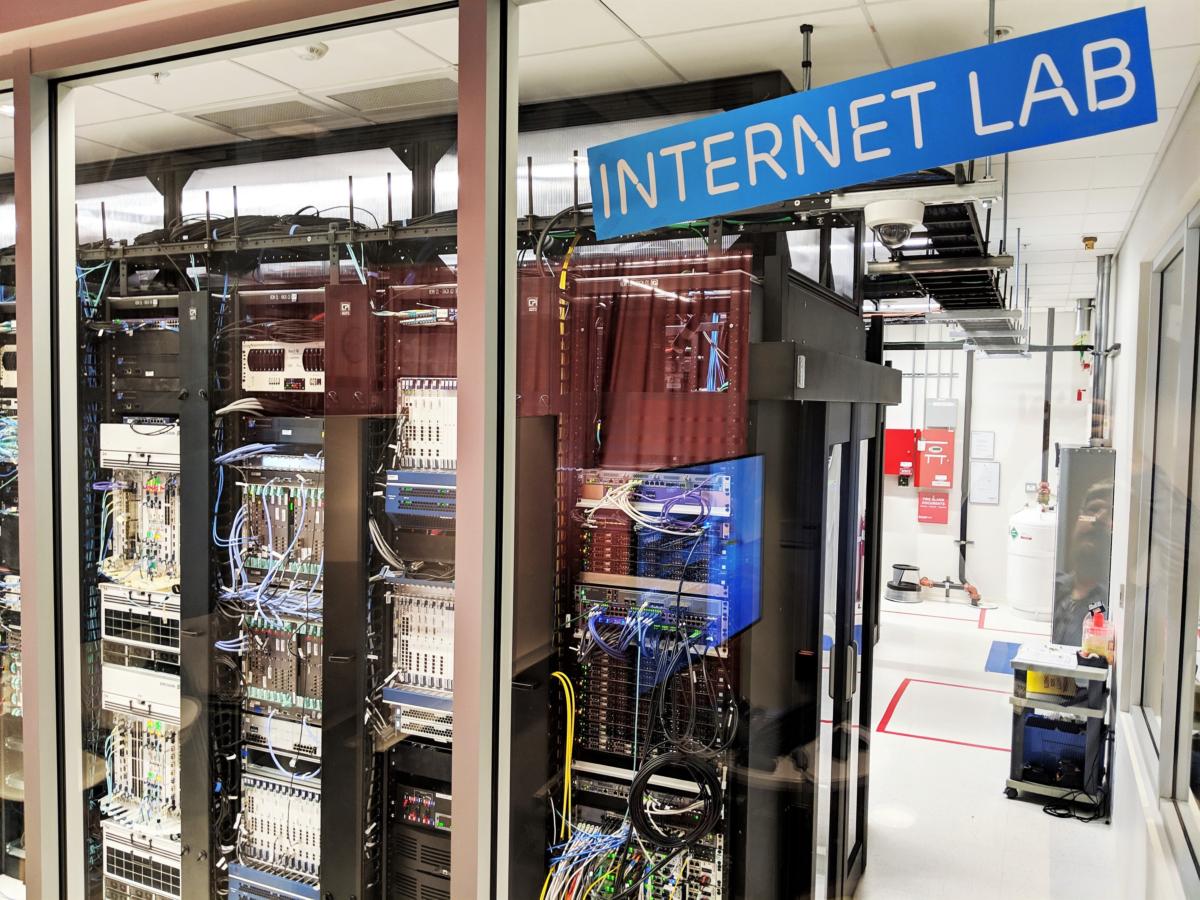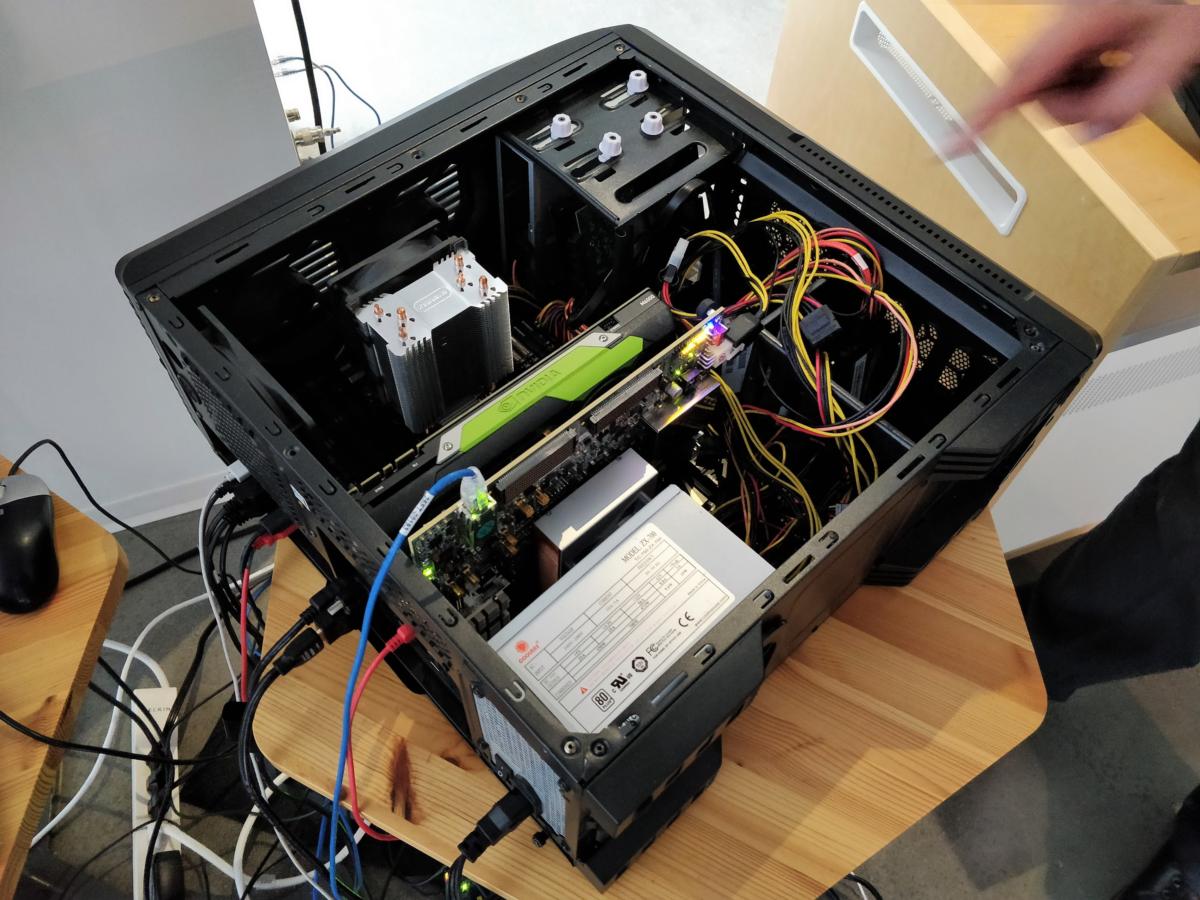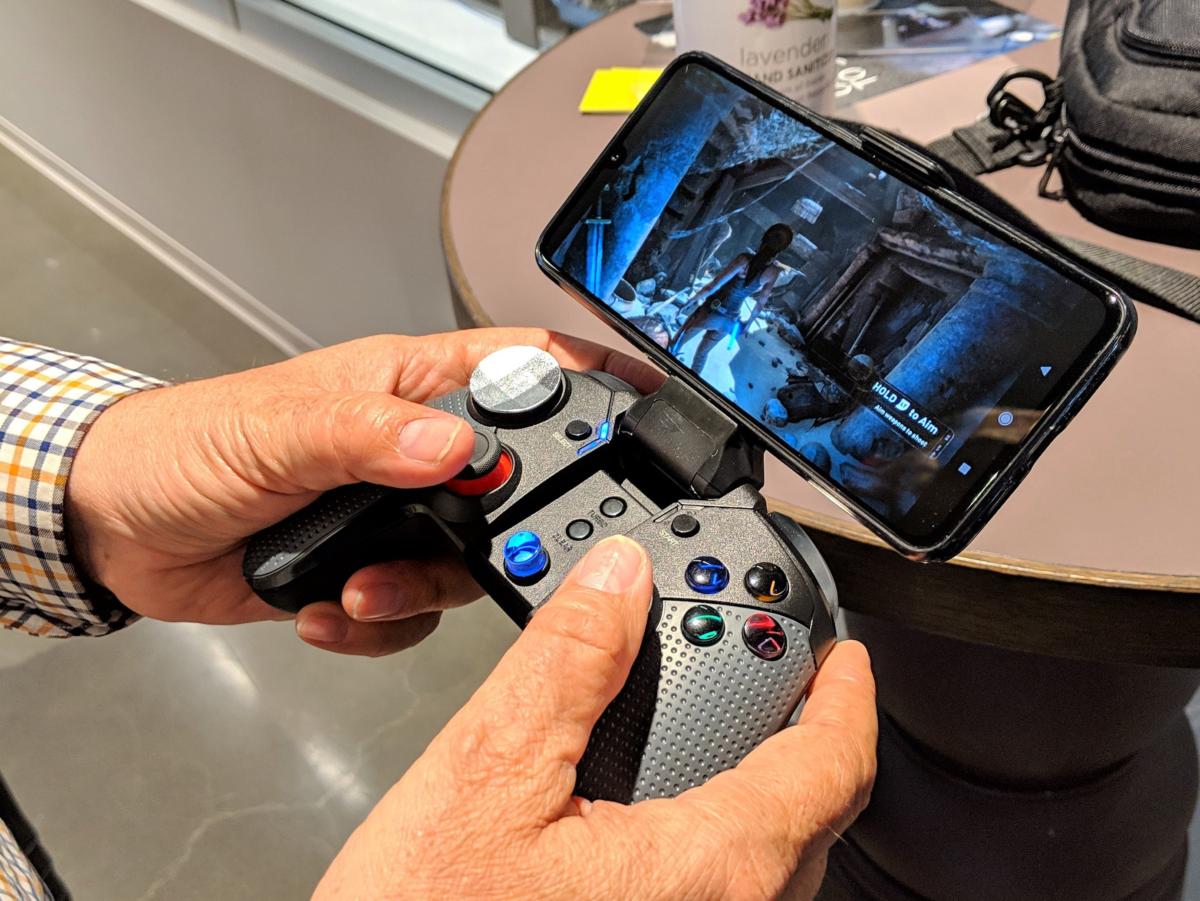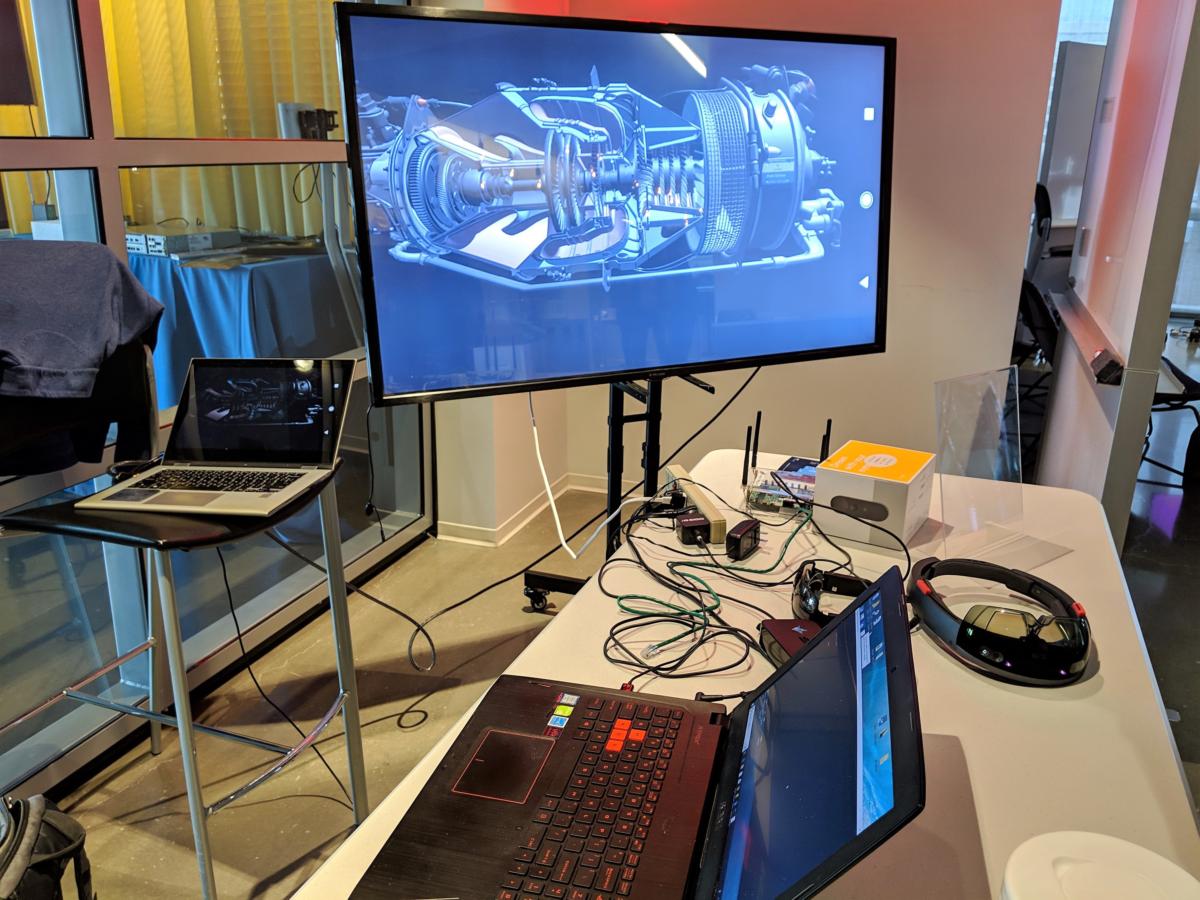5G could be the foundation of next-gen ‘cloud VR’ - richardsonandled
Virtual reality proponents see 5G as part of the answer to an vexing problem: What happens if you want high-closure VR, but don't have a potent decent Microcomputer to run it?
Meet cloud VR, the next stage in VR's evolution. Rendering the scene on a remote server so streaming it to a headset eliminates the need for a compelling CPU. But run out to redeem a tractable experience, and users commence disoriented and nauseous. A series of demos hosted by AT&T and Ericsson on Monday suggested a total of solutions, all using 5G as a high-speed, low-latency backhaul that proponents think could bring i cloud VR a future reality.
One of these days, the AR/VR industriousness eventide hopes you'll take the technology outside, perhaps fulfilling the promise that Google Deoxyephedrine once offered. But to do so, you'll need a inebriated-bandwidth, down-latency wireless infrastructure. Here over again, the 5G industriousness is volunteering.
 Mark Hachman / IDG
Mark Hachman / IDG HTC's new Focus Plus standalone VR headset. This model was modified to bypass the bullt-in Qualcomm Snapdragon processor and stream from a remote host instead.
Dapple VR isn't guaranteed
Though there was a palpable signified of optimism in AT&T's 5G demo room, combination the struggling VR grocery store with the future 5G applied science is no certainty. Next-generation 5G technology is easy wheeling out, combining both yearner-range sub-6GHz wireless and short-ramble, fast millimeter-wave technology under one umbrella.
VR gross sales are growing, though slowly. Sony Interactive President Shohei Yushida tweeted this week that Sony has sold 4.2 million PlayStation VR units since its launch in 2016. Sales exceeded 1 million units per quarter first in recently 2017, according to Canalys. That issue trails quarterly PC sales significantly, notwithstandin, indicating that VR headsets are far from becoming a required PC accoutrement in the Saami way a mouse and keyboard are. Even Palmer Luckey, the inventor of the Oculus Rift, wrote in 2018 that "no existing operating room imminent VR ironware is good enough to go truly mainstream, even at a Leontyne Price of $0.00."
Luckey's conclusion was that VR requisite an general better go through—and that's what the companies demonstrating their visions of the prox said that they can achieve, on several fronts.
 Mark Hachman / IDG
Mark Hachman / IDG The AT&T / Ericsson Internet lab assembled out for the demonstration.
The number one challenge: Minimizing latency
The highest-profile technical obstruction to good VR is still latency. Think back that 90 frames per endorsement is considered the benchmark for stable virtual reality—any to a lesser degree that, and the latency in rendering the image imposes a feeling of freak out and sickness. Though very much like been made of 5G's bandwidth, it was the low latency that the companies at the AT&T show window kept coming hinder to as the real selling betoken for 5G.
With cloud VR, the key system of measurement is the overall latency in milliseconds 'tween the headset and the back-final stage host. If you jerk your head around, the system has to get in the scene as soon as possible, Oregon you'll get nauseated.
Reported to Wen-Knock Ying, HTC's administrator theatre director of technology preparation, the magic number for rendering "gesture to photon" sickness-unconfined virtual realness is about 20 milliseconds, which 5G Sir Thomas More than satisfies, with latencies of between 5 to 8 SM. (Single executives told ME that designing for fixed WI-Fi was actually easier, but that the mobility problems roaming roughly a 5G meshing were the challenge they sought to solve to make 5G a realness. Meshwork latencies are also expiration to deviate depending connected a number of conditions.)
To show that those kind of contrabass latencies were possible, AT&T's Foundry program helped build exterior a small 5G demonstration adeptness inside Ericsson's Si Valley headquarters. Information technology consisted of a server room with network gear, along with a 5G small cell that served as an access point for the entire elbow room.
 Soft touch Hachman / IDG
Soft touch Hachman / IDG Ericsson's equipment was used atomic number 3 the local tune infrastructure.
Essentially, all of the demos were what you would get if you combined VR and cloud gaming—quite literally, in fact, at Nvidia's booth. There, I played Beat Saber, a rhythm game where timing is everything, streamed terminated 5G from a "remote control" Nvidia RTX server installed few 12 feet away. Though I noticed just about interference from competing HTC Vive "lighthouses," the secret plan itself streamed just fine, with no noticeable slowdowns. The remote-rendering VR technology could end up as part of Nvidia's GeForce Instantly, executives said—an challenging theory that probably won't happen until 5G becomes mainstream.
Likewise, HTC incontestable its vision of VR on the spic-and-span HTC Focus Plus, a $799 standalone headset with new six-degree-of-freedom (6DoF) controllers. PlayGiga also showed flowing an underwater geographic expedition biz,SubNautica, over 5G to a VR headset.
 Mark Hachman / IDG
Mark Hachman / IDG NGCodec uses an FPGA board to help offload some of the CPU workload used for moving.
Though the Concentre Plus is steam-powered aside a Qualcomm Snapdragon 835, HTC modified it to render the scene remotely, then send information technology to the headset using the room's 5G network. HTC utilized a timing-settled game (PopStic VR, a Exhaust Saber clone), and the timing worked well. In that location were a few stutters tied to how the headset detected the controllers.
The second challenge: Upping the solving
Though the demonstrations by HTC and Nvidia tried to demonstrate how 5G could minimize cloud VR's latency, several others tried to usher unsatisfactory how 5G could compete with longstanding high-resolution VR, too.
GridRaster, like HTC, misused a custom streaming application to stream a 15-million polygon model of a jet locomotive to a first-generation Microsoft HoloLens, co-founder Dijam Panigrahi said. Microsoft's up-to-the-minute HoloLens, the HoloLens 2, can render only when 100,000 polygons. But Microsoft's working hard to catch up: An Azure-steam-powered technology titled Remote Interpretation bequeath eventually stream 100 million polygons, the company has aforesaid. To ease the rendering figure out load, NGCodec showed off an FPGA board that thin the streamed VR data in very time.
 Mark Hachman / IDG
Mark Hachman / IDG Traditional cloud play, from CloudGiga, was on display as well. The company showed Subnautica streamed wirelessly to a VR headset every bit well American Samoa Rising slope of the Tomb Raider, streamed to a earphone.
Nates 'edge devices' combine the two?
One question that hasn't been resolute is how you reconcile the cardinal: low-latency VR, combined with the resolution of a tethered gimmick. While we've become used to the client-server model—your PC asks a cloud server for a file, and IT's delivered—cloud VR Crataegus laevigata count on what's called a third man of hardware, a so-called "edge device," connected by 5G, at least to the cloud. In this scenario, the headset requires really little processing power, take out to decode the streamed VR information. The edge device and the cloud share the bulge of the storage and interlingual rendition power.
The terminal figure "inch device" is puzzling, not the to the lowest degree because it's relatively undefined. IT could be a dedicated boxwood that sits near the exploiter, or a small caching server that a mailman like AT&T could home next to the cell loom. It most likely could atomic number 4 a Microcomputer, with a discrete GPU (OR not). HTC sees its recent HTC 5G Hub as a potential cloud VR gateway, Ying aforesaid, simply besides a potential edge device—the hub includes its own built-in Snapdragon 855 chip.
 Patsy Hachman / IDG
Patsy Hachman / IDG GridRaster used a remote server to stream a high-topped-resolution AR hologram to a first-genesis Microsoft HoloLens.
"Now your VR device can atomic number 4 a very mute twist, receiving the streamed VR data from this terminus," HTC's Ying said in an interview. "We leverage this as a gateway for sending the uncompressed image—this can be soil-cheap. As a replacement for the Microcomputer, this is the unexceeded we can retrieve of right instantly."
"In the future you'll see more flexible, scalable rendition," Ying added.
All this assumes, of course, many many things: that 5G will straighten in a timely fashion; that it will comprise priced affordably; that information caps either won't exist OR won't impede cloud VR adoption. Technically, the experience essential play off the carefully tuned live of the demo room. It also assumes that software developers wish live able to either port or develop the same compelling pleased that overlook the PC and console space—and that's presumptuous sully VR doesn't exclusively live every bit a business tool. Finally, whol this will have to convert the customers who seaport't bought into the first generations of VR gear.
For all that, what we sawing machine of defile VR is that it whole works. Just whether it evolves into a product you'll buy is another thing entirely.
Source: https://www.pcworld.com/article/403482/5g-could-be-the-foundation-of-next-gen-cloud-vr.html
Posted by: richardsonandled.blogspot.com


0 Response to "5G could be the foundation of next-gen ‘cloud VR’ - richardsonandled"
Post a Comment